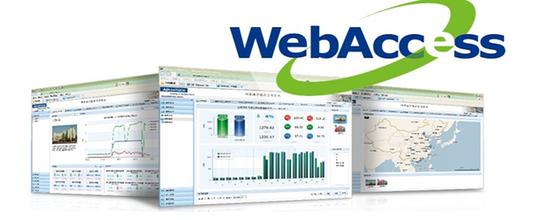1. EXECUTIVE SUMMARY
- CVSS v3 9.8
- ATTENTION: Exploitable remotely/low skill level to exploit
- Vendor: Advantech
- Equipment: WebAccess
- Vulnerabilities: Code Injection, Command Injection, Stack-based Buffer Overflow, Improper Authorization
2. RISK EVALUATION
Successful exploitation of these vulnerabilities could allow an attacker to execute arbitrary code, access files and perform actions at a privileged level, or delete files on the system.
3. TECHNICAL DETAILS
3.1 AFFECTED PRODUCTS
The following versions of WebAccess, an HMI platform, are affected:
- WebAccess Versions 8.4.1 and prior
3.2 VULNERABILITY OVERVIEW
3.2.1 CODE INJECTION CWE-94
An exploit executed over the network may cause improper control of generation of code, which may allow remote code execution, data exfiltration, or cause a system crash.
CVE-2019-13558 has been assigned to this vulnerability. A CVSS v3 base score of 9.8 has been calculated; the CVSS vector string is (AV:N/AC:L/PR:N/UI:N/S:U/C:H/I:H/A:H).
3.2.2 COMMAND INJECTION CWE-77
Multiple command injection vulnerabilities are caused by a lack of proper validation of user-supplied data and may allow arbitrary file deletion and remote code execution.
CVE-2019-13552 has been assigned to these vulnerabilities. A CVSS v3 base score of 8.8 has been calculated; the CVSS vector string is (AV:N/AC:L/PR:L/UI:N/S:U/C:H/I:H/A:H).
3.2.3 STACK-BASED BUFFER OVERFLOW CWE-121
Multiple stack-based buffer overflow vulnerabilities are caused by a lack of proper validation of the length of user-supplied data. Exploitation of these vulnerabilities may allow remote code execution.
CVE-2019-13556 has been assigned to these vulnerabilities. A CVSS v3 base score of 8.8 has been calculated; the CVSS vector string is (AV:N/AC:L/PR:L/UI:N/S:U/C:H/I:H/A:H).
3.2.4 IMPROPER AUTHORIZATION CWE-285
An improper authorization vulnerability may allow an attacker to disclose sensitive information, cause improper control of generation of code, which may allow remote code execution or cause a system crash.
CVE-2019-13550 has been assigned to this vulnerability. A CVSS v3 base score of 9.8 has been calculated; the CVSS vector string is (AV:N/AC:L/PR:N/UI:N/S:U/C:H/I:H/A:H).
3.3 BACKGROUND
- CRITICAL INFRASTRUCTURE SECTORS: Critical Manufacturing, Energy, Water and Wastewater Systems
- COUNTRIES/AREAS DEPLOYED: East Asia, United States, and Europe
- COMPANY HEADQUARTERS LOCATION: Taiwan
3.4 RESEARCHER
Peter Cheng of Elex CyberSecurity Inc.; ADLab of VenusTech; and Mat Powell of Trend Micro’s Zero Day Initiative reported these vulnerabilities to CISA.
4. MITIGATIONS
Advantech has released Version 8.4.2 of WebAccessNode to address the reported vulnerabilities. Users can download the latest version of WebAccessNode at the following location:
https://support.advantech.com/support/DownloadSRDetail_New.aspx?SR_ID=1-MS9MJV&Doc_Source=Download
CISA recommends users take defensive measures to minimize the risk of exploitation of this vulnerability. Specifically, users should:
- Minimize network exposure for all control system devices and/or systems, and ensure that they are not accessible from the Internet.
- Locate control system networks and remote devices behind firewalls, and isolate them from the business network.
- When remote access is required, use secure methods, such as Virtual Private Networks (VPNs), recognizing that VPNs may have vulnerabilities and should be updated to the most current version available. Also recognize that VPN is only as secure as the connected devices.
CISA reminds organizations to perform proper impact analysis and risk assessment prior to deploying defensive measures.
CISA also provides a section for control systems security recommended practices on the ICS webpage on us-cert.gov. Several recommended practices are available for reading and download, including Improving Industrial Control Systems Cybersecurity with Defense-in-Depth Strategies.
Additional mitigation guidance and recommended practices are publicly available on the ICS webpage on us-cert.gov in the Technical Information Paper, ICS-TIP-12-146-01B–Targeted Cyber Intrusion Detection and Mitigation Strategies.
Organizations observing any suspected malicious activity should follow their established internal procedures and report their findings to CISA for tracking and correlation against other incidents.
No known public exploits specifically target these vulnerabilities.
Source:
https://www.us-cert.gov/ics/advisories/icsa-19-260-01


Stay connected